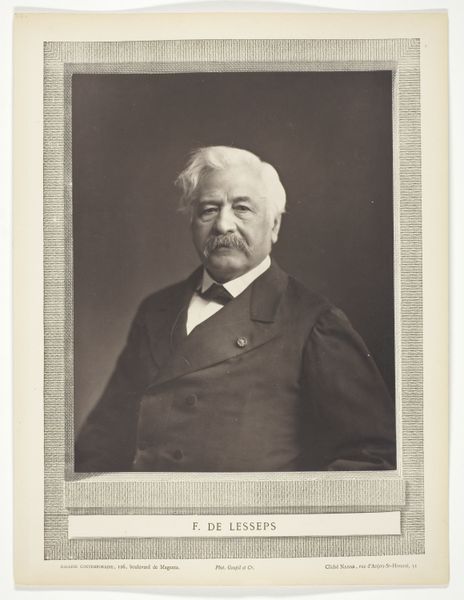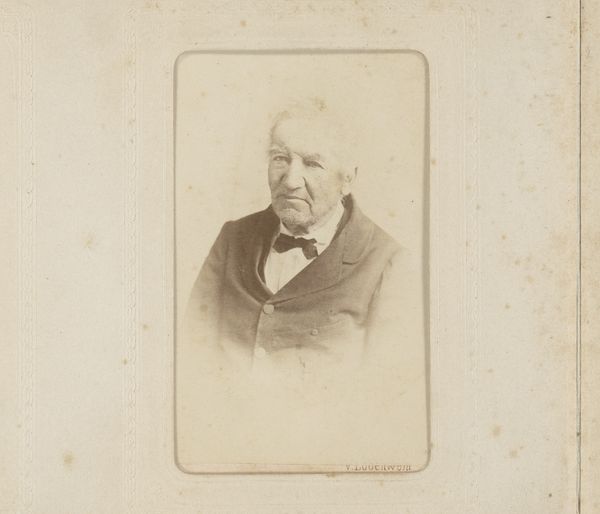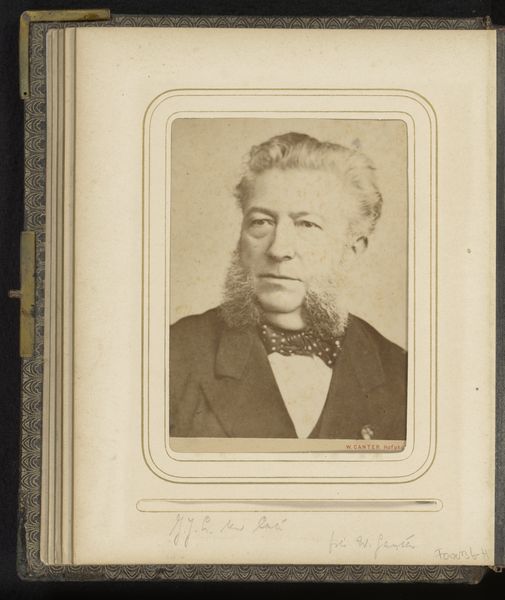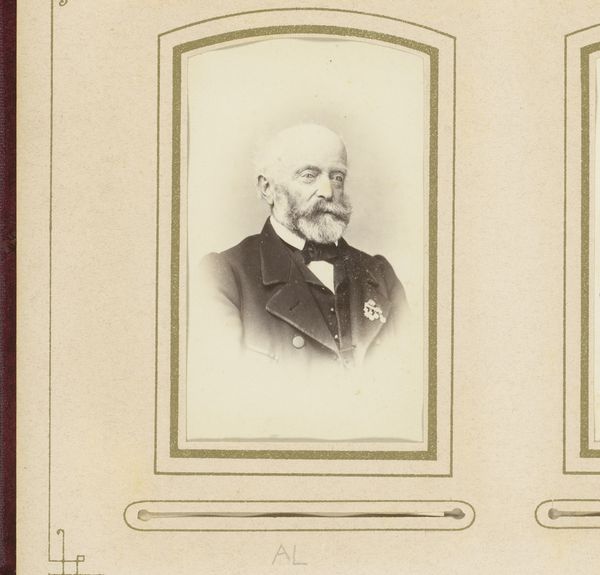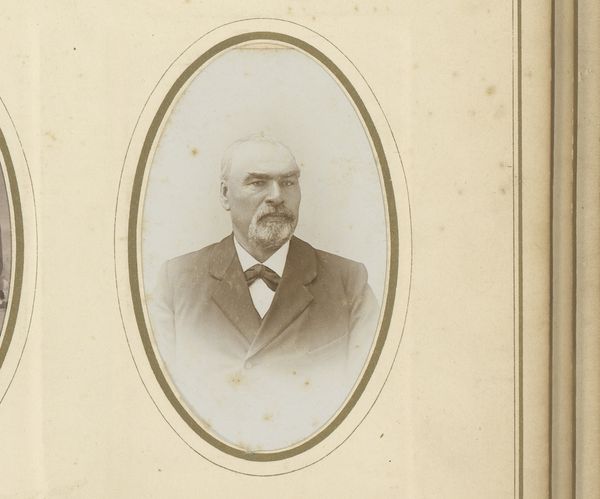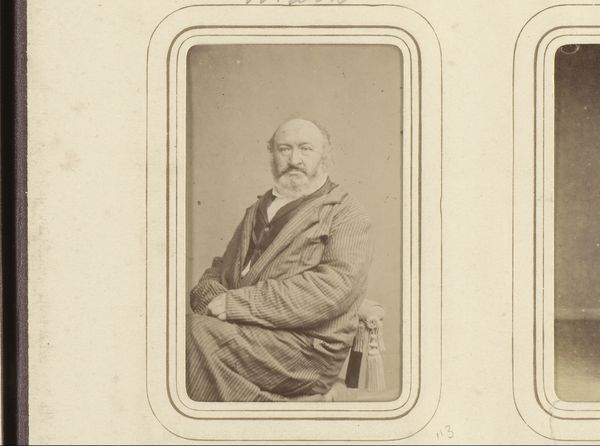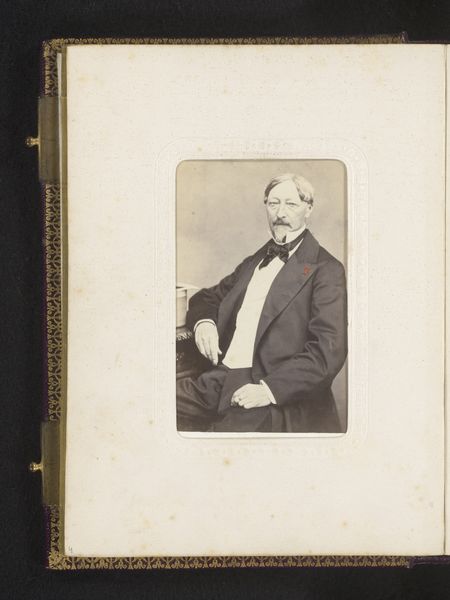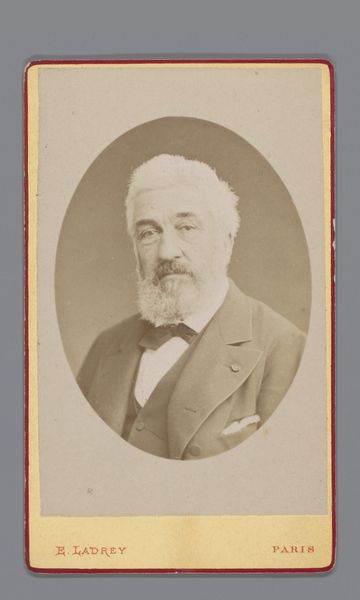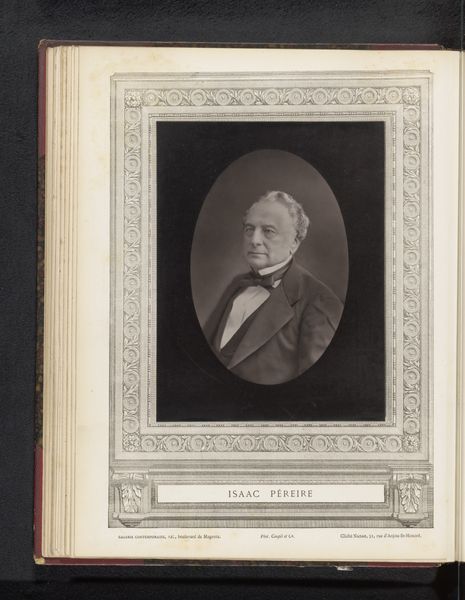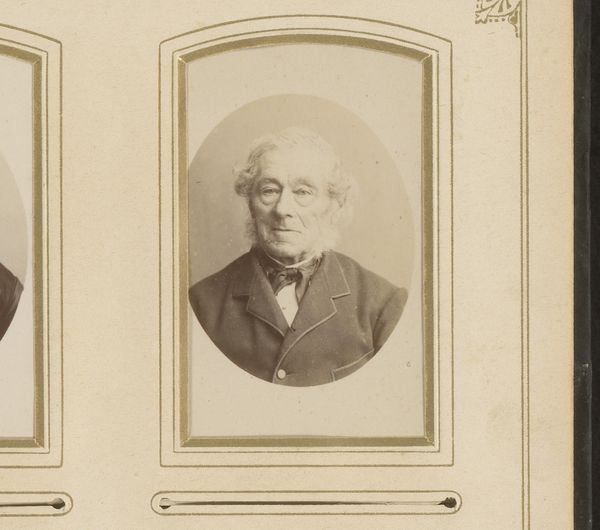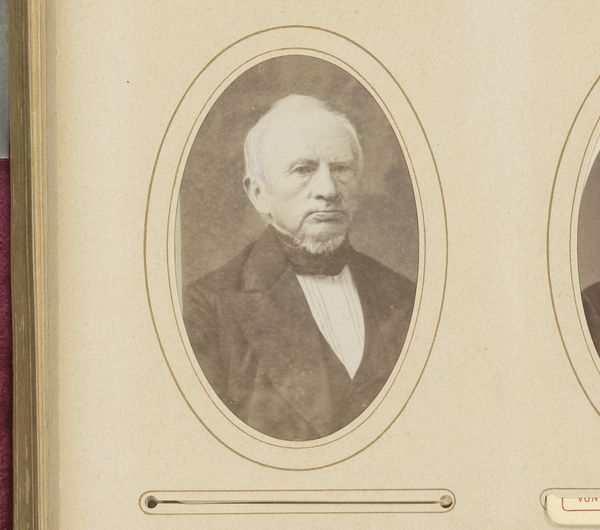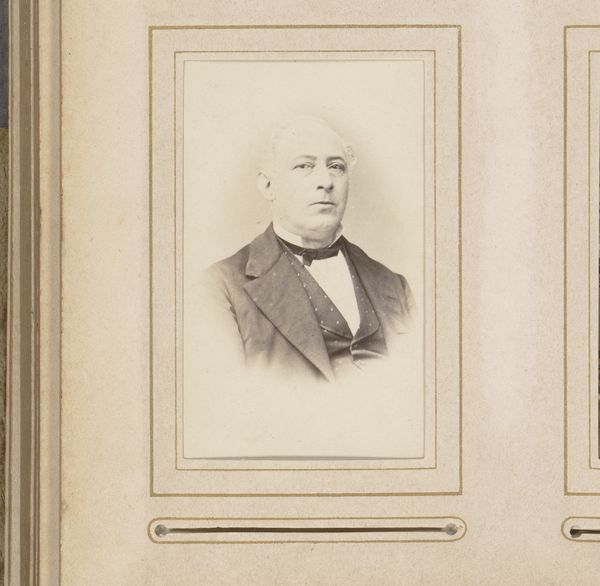
daguerreotype, photography
#
portrait
#
daguerreotype
#
photography
#
realism
Dimensions: height 236 mm, width 191 mm
Copyright: Rijks Museum: Open Domain
Curator: Before us we have a photograph entitled "Portret van Ferdinand de Lesseps," captured by Nadar sometime before 1876. The piece, currently held in the Rijksmuseum, is a daguerreotype, a very early photographic process. Editor: It has a certain stern formality. Look at the controlled lighting, the direct gaze, that meticulously groomed mustache! It suggests a man of power, very aware of his public image. Curator: Indeed. Ferdinand de Lesseps was a key figure in 19th-century engineering, best known for his role in developing the Suez Canal. This portrait would have served to reinforce his status and celebrate his achievements. Photography at the time played a key role in bolstering public figures. Editor: Precisely. And we need to consider the politics surrounding such endeavors. The Suez Canal, though an impressive feat of engineering, also represented European colonialism and the exploitation of labor. This portrait then isn't just an image of a man, but a symbol of a complex and often troubling historical period. Curator: Consider also Nadar’s position within that context. He wasn’t just a photographer, but a political activist and caricaturist. This portrait is fascinating because while it adheres to certain conventions of portraiture, it's done by someone keenly aware of power dynamics and societal narratives. I see how Lesseps may have been seen as a celebrity of the time. Editor: Absolutely. Think about how such images shaped perceptions, bolstering support for colonial projects. The photograph isn't simply a neutral record; it actively participates in the construction of celebrity and the justification of actions within its specific sociopolitical atmosphere. Curator: By viewing "Portret van Ferdinand de Lesseps" we encounter much more than just an old photograph of a historical figure. We see reflected the complicated intersections of power, representation, and technological advancement in the nineteenth century. Editor: This piece really invites us to question the role of art in perpetuating narratives, prompting important dialogue. We need to consistently challenge the assumptions we make and examine the full spectrum of voices affected.
Comments
No comments
Be the first to comment and join the conversation on the ultimate creative platform.
